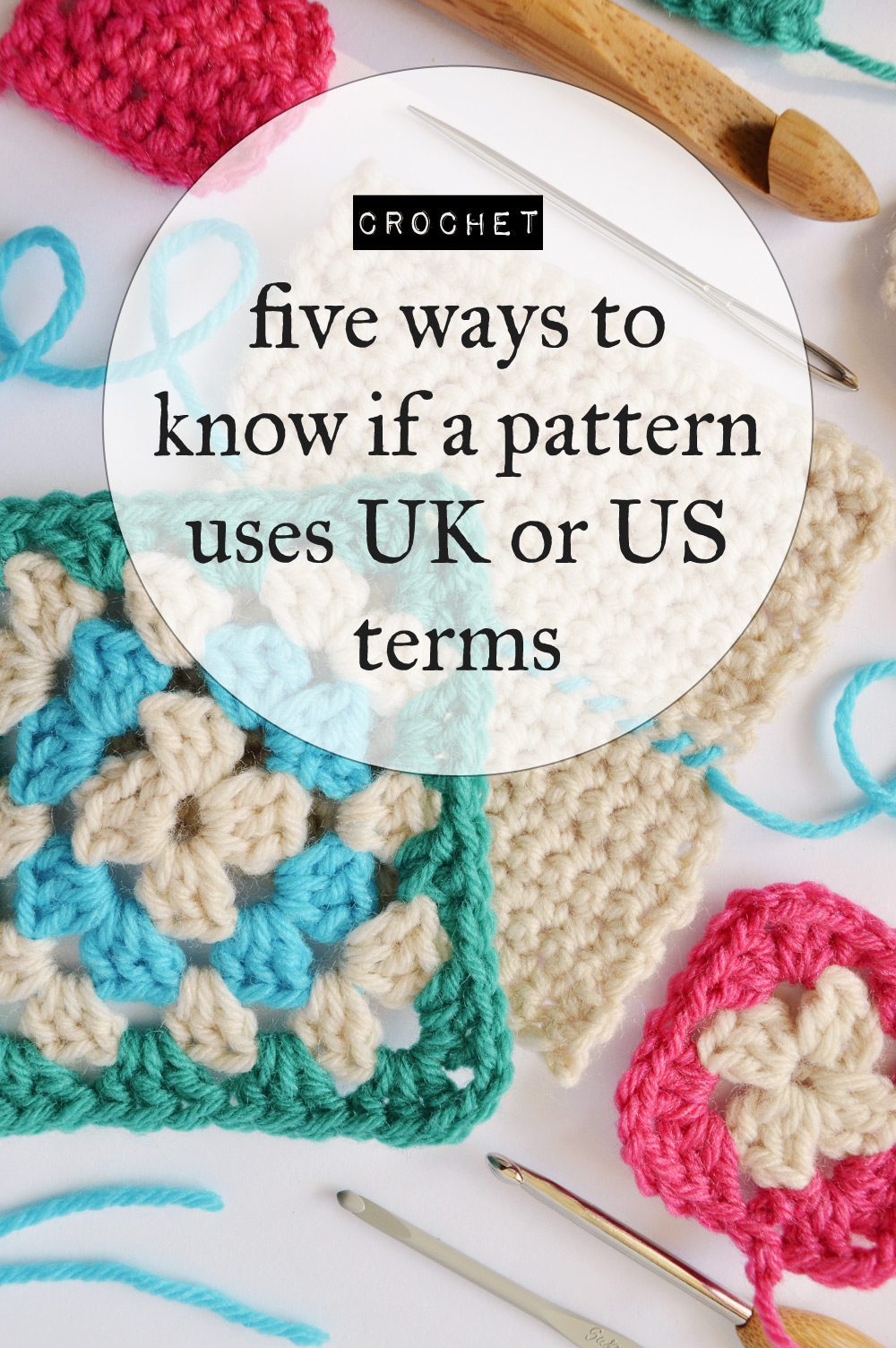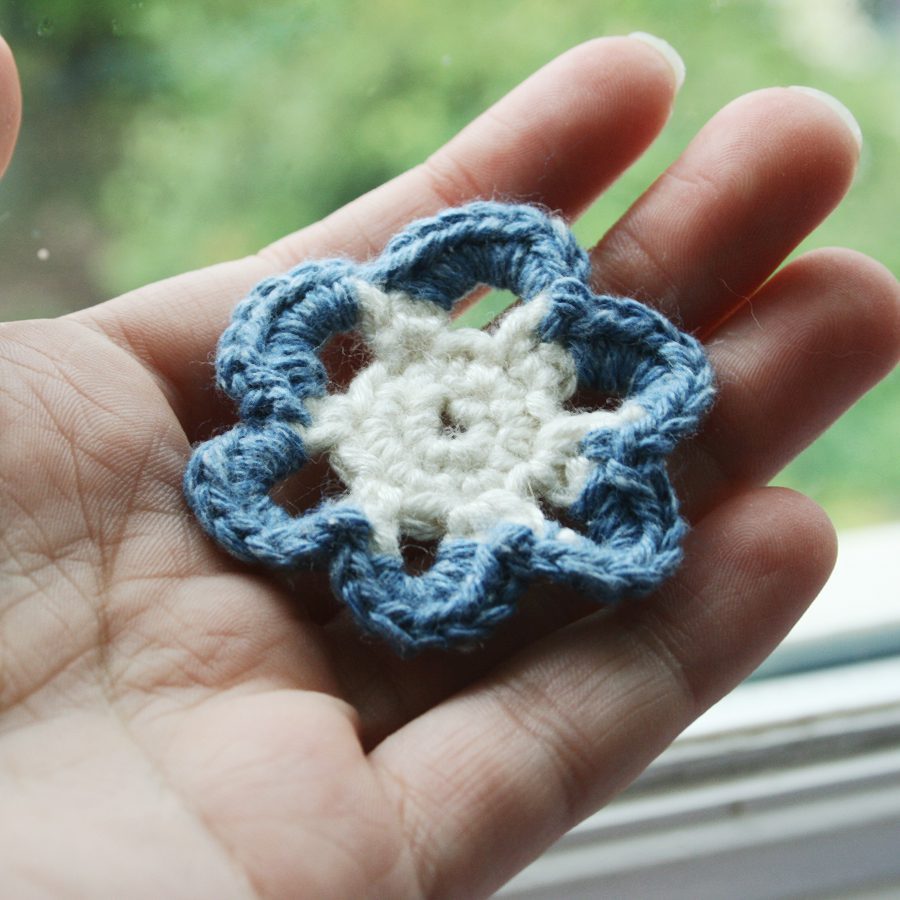How to tell if a crochet pattern uses UK or US terms

Patterns are more abundant and international than ever.
I love how generous the crochet community is in sharing their ideas. Ravelry alone has over 60,000 free crochet patterns. And without Youtube tutorials, I don’t think I would have ever been able to learn to crochet.
There is a catch though. Crochet patterns don’t all use the same regional terms. If you’re a crocheter you’re probably well aware that there are two sets of terms. To make things worse, both sets use the same words to mean different things.
[table]| Converting regional crochet terms | |
|---|---|
| UK terms | US terms |
| chain / ch | chain / ch |
| double crochet / dc | single crochet / sc |
| half treble / htr | half double / hdc |
| treble / tr | double / dc |
| double treble / dtr | treble / tr |
| triple treble / ttr | double treble / dtr |
These are methods I use to tell if a crochet pattern uses US or UK terms.
The quickest trick: look for ‘single crochet’
By far the simplest way to identify a US pattern is to look for single crochet, or SC. Although UK and US terms are very similar, single crochet is only a US term. It’s known as double crochet in the UK, and is the simplest crochet stitch.
Not every pattern uses US single crochet/UK double crochet. Here are a few other ways to check:

Check the chart
If there’s a complementary chart, compare the pattern to the symbols. Chart symbols are universal, which makes reading them a handy skill if you like to browse foreign patterns.
Learn how to read a crochet chart symbols with these handy guides:
- Crochet chart symbols (UK terms)
- Crochet chart symbols (US terms)
Say you prefer UK terms like I do. If a chart shows a T symbol (no slashes on the stem) it should be called half treble crochet, or htr. If the written pattern calls the T a half double or hdc, I know it’s a US pattern.
Look for a detailed photo
If there isn’t a chart, look closely at any photos of the pattern. While this won’t work for felted or fuzzy yarns, it’s great for small items like amigurumi and accessories. If individual stitches aren’t clear in the photos, crochet a small sample and compare to the expected appearance.

This guide to basic crochet stitches (US terms) has lots of photos to help you learn what different stitches look like.
Check the spelling
Colour or color? Grey or gray? If the pattern is written in American or British English, that’s already a big clue. You can try to check where the designer is based, too. Most non-British designers use American terms. Designers will use the same set of terms in all their patterns, too. If one of their patterns uses single crochet, all of their patterns should use American terms.
Just ask
Other crocheters or even the designer will be able to help if you’re still stuck. If nothing else works, you can always start crocheting and see how it works out! One good thing about crochet is that you can rip up the yarn if you need to.
Last but not least, don’t forget to read the pattern details thoroughly. Most designers are kind enough to state whether the pattern uses UK or US terms.
What crochet terms do you prefer to use?
Lots of crafty love,
![]()





![August's Technique of the Month: Watercolours [REVIEW]](https://i0.wp.com/craftingfingers.co.uk/wp-content/uploads/2018/07/Cass-Art-watercolours-for-beginners-review-8.jpg?resize=200%2C200)







The other way is the hook size. If it says 5mm then it is British if it says L5 or similar then it is USA That’s how I work it out also looking at the stitches in the pattern.
I like US and I’ve been confused before on what terms are being used. It does help if there is a chart. These are very helpful tips
Thank you! I’ve been trying to work out if the pattern I’m about to start is US or UK. I prefer UK as I learned to crochet when young here in England.
Thankyou…very helpful information.
Brilliant post – especially as a new crocheter – this difference in terminology is nothing if not frustrating. Makes me want to drink a gallon of something strong – there in lies another confusion US/UK wise
Are ricorumi puppies made in single crochet or double crochet. I started making one and it seems so much bigger than it should be . I tried it in single crochet and it seemed the write size. Confusing
I prefer UK terms. i have only ever followed a pattern once and it was UK terms.It is what I learnt in.